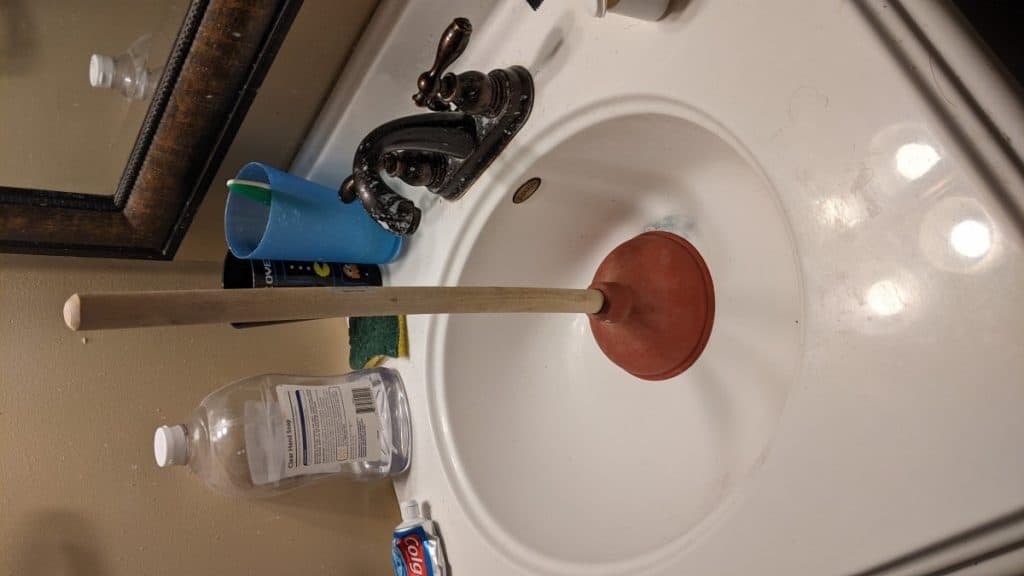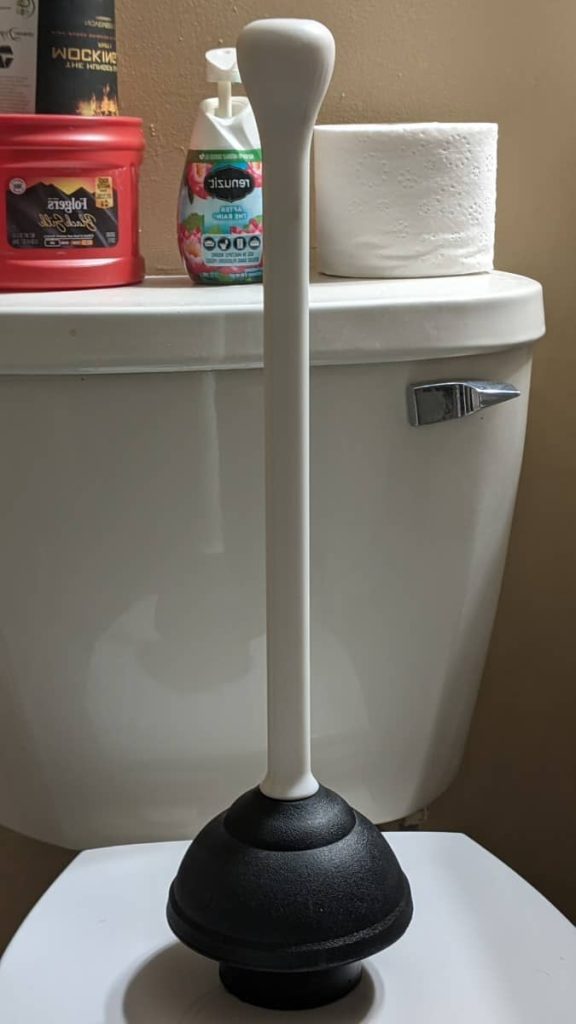I’ll admit, I was guilty of picking the wrong plunger for many, many years even as an adult. Growing up in an impoverished rural family, I knew what a toilet plunger was and what it looked like. Long wooden handle and a red rubber plunger at the end. Gross but effective.
Well most of the time, eventually.
WRONG!
That is a sink plunger. If you imagined the classic plunger with a rubber bottom and a wood handle, you literally imagined a plunger that was designed for use with sinks or basins, not with toilets. So if you’ve ever wondered why the plunger wasn’t as effective as it should have been, why it always seemed to struggle to get the job done (especially with old toilets) well there you go.
Sink plungers are simple plungers with a handle and a cup. Toilet plungers are similar but have a handle, and a larger plunger section that includes a flange. This creates a seal and harder suction that is more properly designed for dealing with common toilet clogs making it much more effective compared to a simple sink plunger.
While a simple plunger can work, and is certainly better alternative than nothing, it’s not the ideal setup. Let’s dive into how knowing the difference between style and type of plunger and a couple of dollars can make all the difference in the maintenance of your bathroom.

Sink Plunger Vs. Toilet Plunger: Do You Know the Difference?
Look this is one of those mistakes most of us made unless we came from a family of plumbers or had some serious guidance. And for those of you just out of college or out of the house a cheap plunger will do the trick. In fact, many sink plungers have the unnecessarily long handle for sink use just to make it “dual use.”
While this can work for short periods of time, it’s not a good long-term solution.
To tell them apart, basically sink plungers tend to have a single one-piece suction cup that is smooth and doesn’t have extra bends or design elements of any kind. Toilet plungers tend to have rivets that create a more solid seal to force clogs forward or back much more effectively than the simple rubber head plunger shown in the sink below.
The Sink Plunger
While the extended handle is intentional with the design in the picture to make it an “all-purpose” plunger, this is a design that was more meant for a sink. Simple seal, simple pressure. A true sink plunger that has not been designed to be all-purpose will have a smaller handle, but otherwise this is a good way to think of the design.
To be clear there was a time where this was just a plain plunger design – but seeing as how the design of plungers has gotten better, a single cup is pretty much better for sinks while the more advanced designs are for toilets.
However, if this is all you have on hand or all that’s available at the local outlet, than go with it. This is certainly better than nothing, but once you have the ability to upgrade, it’s a good idea to do so.

The Toilet Plunger
Ah yes, the room where you really want to make sure you have the right plunger. This is one of those tools that you’re never happy to need, but when you need it you definitely want the right one there!
Toilet plungers have the more elongated suction cup at the bottom that involves a flap design, which creates a tighter seal and allows more force. Since more force is often needed to force a toilet pipe cleared versus sink, this makes for a more effective design for most common household situations.
And it’s not like the cost is a huge difference. A good toilet plunger has a more developed cup design, and this will make life a lot easier if you’re dealing with an old toilet from an old farmhouse that isn’t exactly built to modern standards.

The Yanxus Toilet Plunger is one I’m using now and would recommend. It’s very well designed, easy to clean, easy to store, and extremely inexpensive. Just really good overall option, and if you’re struggling with an old toilet and septic system, you’ll notice how much this smooths out the process.
Does the Type of Plunger Really Make a Difference?
Yes, having the right type of plunger makes a huge difference. Now that doesn’t mean that a cheap sink plunger can’t be used for toilets. There was a time where I didn’t know the difference between these two designs and made the mistake that so many of us tend to make as young adults. Especially coming from a very budget-conscious family growing up.
And the cheapest plungers were those classic simple red suction cup ones that are designed for sinks, so if money was tight that just became your all-purpose go-to. No shame, and in an emergency it’s better than having nothing.
However, if you’ve never tried out both plungers then let me answer the obvious question that would come up from that experience: “Does it really matter what type of plunger I use?”
Yes, it does. While the cheap simple sink plungers are (sometimes) capable of getting the job done, think of those times you’ve had to work on getting a toilet unclogged. Not a fun way to spend your time. And it’s gross, and it sucks, and the harder it is to get the toilet cleared the messier leftover clean up tends to be. The suction cups to each type of plunger are designed differently because they’re designed to work best with the household appliance (toilet vs sink) that they were specifically designed for.
Can you MacGyver a solution in a snap? Sure, but why do things the hard way when there’s a much simpler solution?
It’s not like a decent plunger is that expensive. Because it’s really not, and going for that little extra bit of investment is worth its weight in gold on the return.
Not to mention a decent toilet plunger is less likely to break, wear down, or rupture than a cheap rubber sink plunger. Not to mention the fact they are usually much more effective on the first attempt at plunging.
Let’s be honest: that situation is never especially pleasant so the sooner you’re done with it, the more complete the job, and the less you need to revisit it, the better. Spending $5 or less extra to have the right type of plunger seems like a small price to pay for that.
In Conclusion
There isn’t a big price difference between one plunger or two and here’s the best thing about having the right plungers: the right ones work the best for what they’re designed for AND then you have the perfect emergency backup when you need another plunger. That’s kind of the ideal situation because if there’s one time you don’t want to find yourself without the necessary tools, when you need a plunger is one of them.
So take this knowledge, make sure to have a good sink plunger for the downstairs sink, good sink and toilet plungers for the upstairs bathroom, and you’ll be all set to go!
